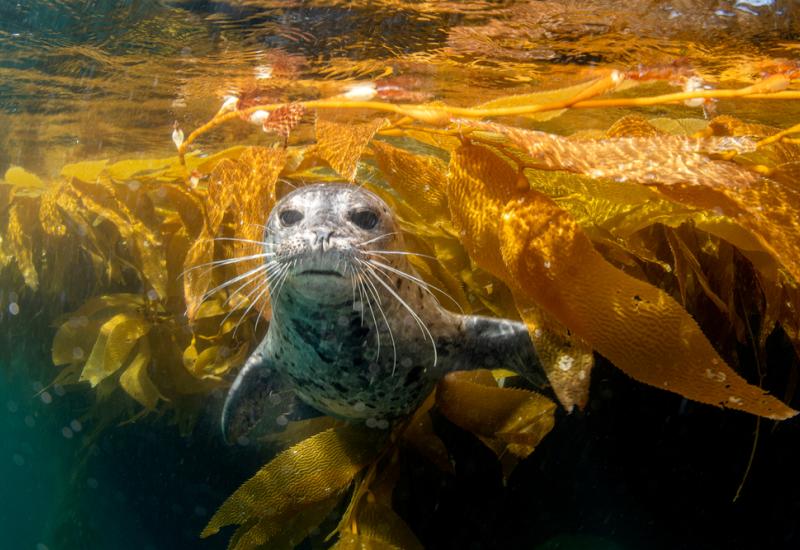Diving California's Famous Yukon Wreck

Allison Vitsky
San Diego’s popular Yukon wreck is known as one of the most exciting dives in California. Located about two miles off the coast in Mission Bay’s Wreck Alley, the 366-foot former Canadian Destroyer was intentionally sunk as an artificial reef in 2000. Before it went down, the Yukon was specially prepared, with entrance holes, buoys, murals and other diver-friendly features added to enhance the diving experience. The wreck is so extensive and well-preserved, there are many different dives to try out. In fact, you can explore the ship dozens of times and still not see everything.
To get the inside scoop on the Yukon, which will also be the featured "State of Diving" hot spot in the June 2011 issue of Sport Diver, we spoke with boat captain and PADI Assistant Instructor Anita D’Amato — who has logged more than 600 dives on the wreck — and PADI Divemaster and Scuba Diver Girls (www.scubadivergirls.com) co-founder Margo Sanchez. The following interview details their extensive experience diving the famous wreck and provides tips those divers who want to explore it for the first time:
Sport Diver: How often do you dive the Yukon?
Anita D’Amato: Because I work on a dive boat as a captain as well as a divemaster, I visit the site often and dive it about 5 times a month. I know this wreck like the back of my hand!
**
Margo Sanchez: ** My first dive on the Yukon was just a few years ago. I now have approximately 30 dives on the wreck. Every time I dive it, I see something new.

Margo Sanchez, left, and Anita D’Amato|
Sport Diver: What’s the attraction; what makes you return again and again?
D’Amato: Each time I dive it, I notice parts of the wreck that are changing from deterioration and new life taking residence on this huge artificial reef. After a big storm comes through, you notice that life has been ripped away, but not long after, new life takes its place. Depending on the season, you’ll see different things — in spring there are huge schools of fish, whereas in summer we see harbor seals, and then during fall and winter the sea lions are hanging out.
**
Sanchez**: I love the excitement of dropping down and seeing the line disappear into murk below, with the knowledge that there’s an enormous Canadian Destroyer down there. But sometimes, even at 15 feet away, I can’t see it. Then, when it finally comes into view, it’s so breathtaking — but ominous at the same time.
Sport Diver: How does the Yukon compare to other local dive sites? What does it represent to the local dive community?
D’Amato: It’s the only artificial reef of that size in the area. The average diver can see about one-half to two-thirds of the boat on each dive, depending on visibility and what you are looking for. So it’s easy to dive it multiple times in one day and not see the same thing twice. If you are going to do two dives on the Yukon, you can do the first dive on the forward guns and the second on the stern to go up the cargo hole or around back and look at props. Even though it wasn’t planned for the ship to end up on its side, it definitely adds an element of interest to this dive site. It hit the bottom so hard that the keel — the bottom of the boat — is wrinkled. It takes a while to make sense of what you are seeing — that’s why the captain’s quarters toilet and bathtub are on the wall.
Many locals who dive it were a part of the project to sink it. Lots of people dive it the first time and think it’s big and scary, and that creates excitement. For others, it’s their first experience on a wreck. Even seasoned divers are amazed by the white metridium anemones. It’s cool to listen to tough guys describe how pretty it is and all the “fishies” they saw.
**
Sport Diver: Are there any special dive skills required to dive the Yukon? What level of experience would you recommend a diver have before visiting the wreck?**
D’Amato: The deepest point of the wreck — if you touch the sand — is 112 feet; the top of the wreck is about 70 feet. So you should be at least a PADI Advanced Open Water diver. Because conditions in San Diego include lower visibility and cold water, divers should also have some experience diving in those conditions. Good buoyancy and control are always important. Experience with free ascents is good, just in case you need to ascend from the deep not near the line. As with any wreck dive, if you want to penetrate, you need training in diving in overhead environments.
Sport Diver: What’s your best Yukon story?
D’Amato: The Yukon grew on me. In the beginning, when it didn’t have much life on it, I was doing my Advanced Open Water and we were taking measurements at the stern to see how wide across the deck was. I was on the bottom at the port side, and my buddy was on the starboard side. While nobody was looking, I stuck my head in one of the holes and remember thinking how dark and scary it looked. But as I looked around, I could see the light streaming through, and I remember thinking how cool it was. I knew at that moment no matter how big and scary this thing was — and every voice in my head was telling me there was no way I could go in there — that the Yukon would keep calling me to explore her. My instructor saw the amazement on my face and told me I should really take a wreck-diving class. I followed his advice, and that’s when I really fell in love with wreck diving.
Sanchez: My favorite dive on the Yukon was last summer when 10 Scuba Diver Girls decided to visit Wreck Alley. The plan was to do one dive on the Yukon and then move to the Ruby E and do a second dive. We dropped down near the forward guns, and the visibility was at least 30 feet. The entire dive felt like we were on a jungle gym with our friends. I watched a couple divers with reels go into the wreck, while others were pointing out things to their buddies and some were taking pictures. I floated off to the side and just watched for a few minutes, marveling at the scene. I had never been on the Yukon when I could see what everyone was doing, and it showed me that this dive site offers different experiences to different divers — it all depends on what makes you happy when you dive!
For more information on the Yukon, visit www.yukonsite.wordpress.com
To book a dive trip to the Yukon, visit www.waterhorsecharters.com or www.loisann.com










